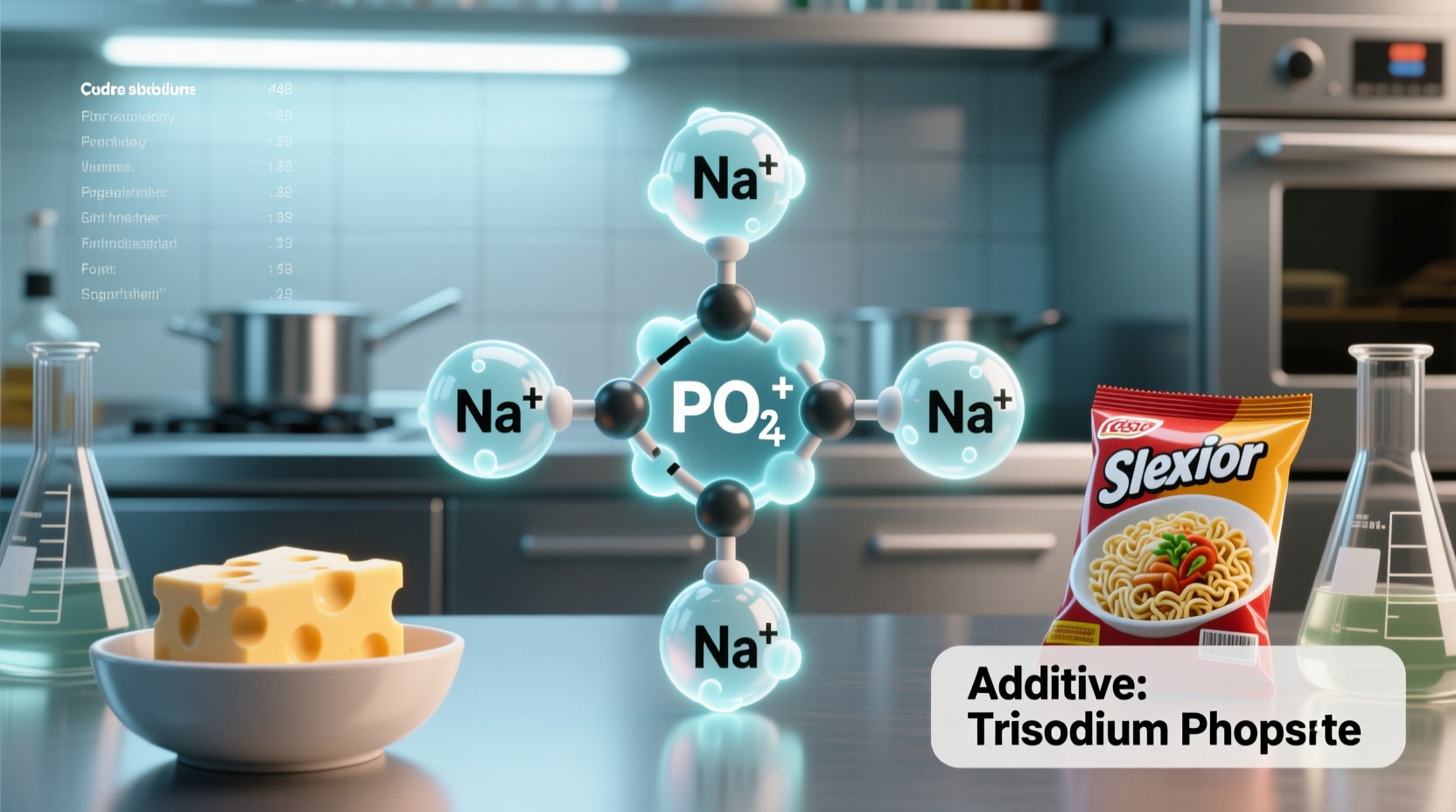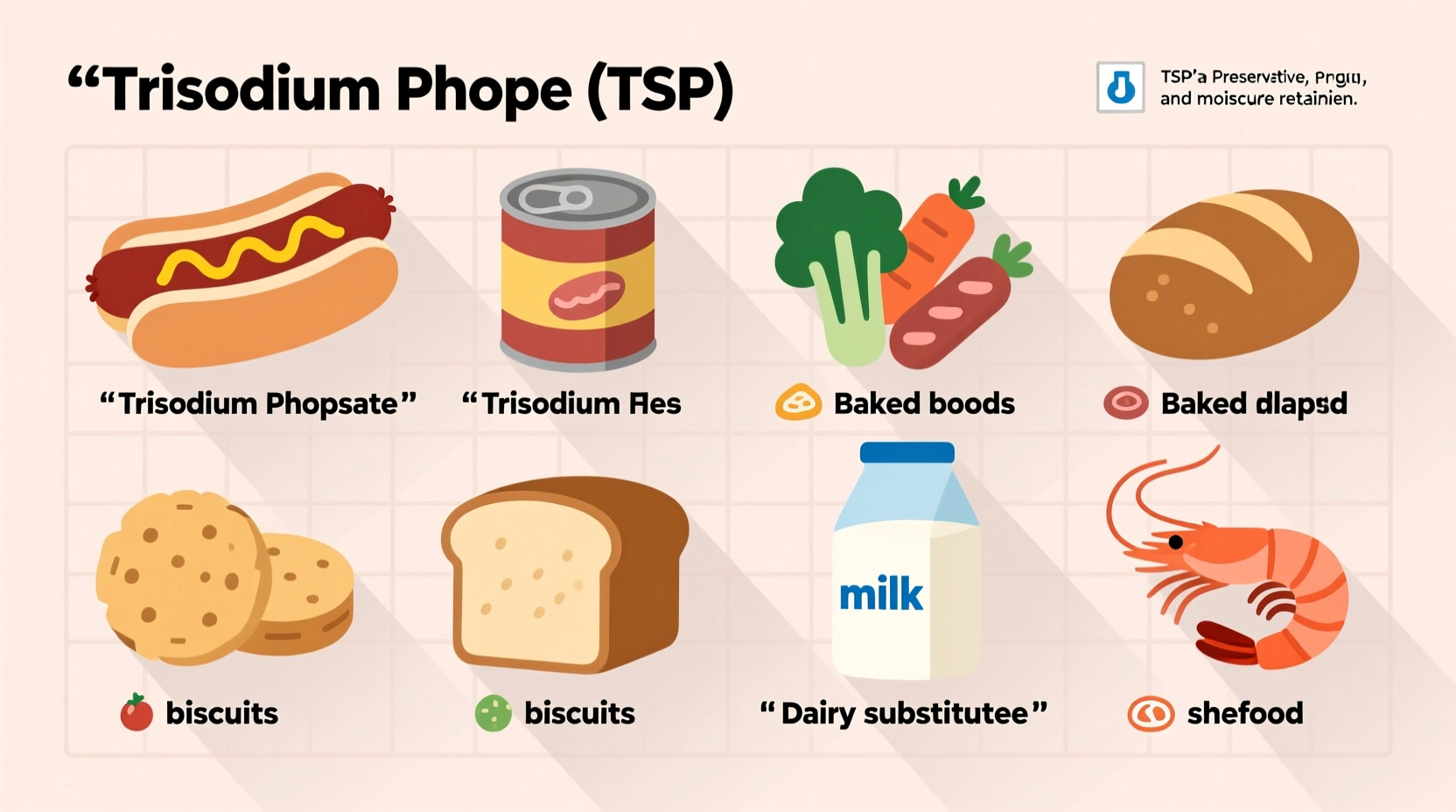Trisodium phosphate (TSP) appears primarily in processed foods like cheese products, breakfast cereals, baked goods, and some canned items. The FDA classifies it as Generally Recognized As Safe (GRAS) when used within approved limits, typically under 0.5% of the final product weight.
Discover exactly where trisodium phosphate hides in your pantry and what you need to know about this common food additive. In this comprehensive guide, you'll get science-backed information about which foods contain TSP, why manufacturers use it, and what regulatory agencies say about its safety.
What Exactly Is Trisodium Phosphate?
Trisodium phosphate (Na3PO4) is an inorganic compound used as a food additive primarily for its emulsifying, pH control, and texture-enhancing properties. Unlike its industrial cousin used in cleaning products, the food-grade version undergoes strict purification processes to meet safety standards.
"Food manufacturers rely on trisodium phosphate because it helps maintain consistent product quality," explains Antonio Rodriguez, our food science specialist. "It prevents ingredient separation in cheese products and helps cereals maintain crispness in milk." While not a nutrient, TSP serves important functional roles in food production.

Common Foods Containing Trisodium Phosphate
When scanning ingredient labels, you'll most frequently encounter TSP in these categories:
| Food Category | Common Products | Typical TSP Concentration |
|---|---|---|
| Cheese Products | Processed cheese slices, cheese spreads, nacho cheese | 0.3-0.5% of final product |
| Breakfast Cereals | Many fortified corn and wheat cereals | 0.1-0.3% of final product |
| Baked Goods | Cake mixes, pancake batter, dough conditioners | 0.2-0.4% of final product |
| Canned Foods | Some canned pasta, soups, processed meats | 0.1-0.3% of final product |
Why Food Manufacturers Use Trisodium Phosphate
Food scientists incorporate TSP for three primary functional reasons:
- Emulsification: Helps blend ingredients that normally separate, like oil and water in cheese products
- pH Control: Maintains optimal acidity levels for texture and shelf life
- Texture Enhancement: Contributes to the characteristic melt of processed cheese and crispness of cereals
The FDA's Code of Federal Regulations (21 CFR §182.1778) specifically authorizes trisodium phosphate as a food additive when used in accordance with good manufacturing practices. This means manufacturers must use only the minimum amount necessary to achieve the desired technical effect.
Safety Profile and Regulatory Status
Multiple regulatory agencies have evaluated trisodium phosphate for food use:
| Regulatory Agency | Status | Maximum Allowable Level |
|---|---|---|
| U.S. FDA | GRAS (Generally Recognized As Safe) | Up to 0.5% in most applications |
| European EFSA | Approved (E339) | Varies by food category (100-3000 mg/kg) |
| Joint FAO/WHO Expert Committee | Acceptable | 70 mg/kg body weight per day |
The acceptable daily intake (ADI) established by the Joint FAO/WHO Expert Committee on Food Additives is 70 mg per kilogram of body weight. For a 150-pound adult, this translates to approximately 4,750 mg daily. Typical dietary exposure from food sources averages just 100-300 mg per day, well below safety thresholds.
Consumer Considerations
While generally considered safe, some consumers prefer to minimize TSP intake for various reasons. If you're checking labels:
- Look for "trisodium phosphate" or "E339" in ingredient lists
- Organic-certified products cannot contain TSP
- Many "clean label" brands have reformulated to eliminate TSP
- Whole, unprocessed foods naturally contain no added TSP
Research published in the Journal of Food Science indicates that removing TSP from certain products can affect texture and shelf stability. Manufacturers often replace it with citrates or other phosphates when reformulating products for "cleaner" labels.
Environmental and Health Context
It's crucial to distinguish between industrial-grade and food-grade trisodium phosphate. The EPA regulates industrial TSP for water treatment and cleaning products, but food-grade TSP undergoes additional purification to remove impurities.
The FDA maintains strict specifications for food-grade TSP under 21 CFR §172.172, requiring minimum 97% purity and limiting contaminants like heavy metals. This regulatory distinction explains why concerns about industrial TSP don't apply to its food additive use.
Practical Takeaways for Consumers
Based on current scientific understanding and regulatory oversight:
- Trisodium phosphate in food is considered safe at current usage levels
- It serves important functional roles in certain processed foods
- Typical dietary exposure remains well below safety thresholds
- Consumers seeking to avoid TSP can choose organic products or check labels
- Complete avoidance requires focusing on whole, unprocessed foods
Remember that trisodium phosphate naturally occurs in small amounts in many foods as part of the phosphate content in ingredients like dairy and grains. The additive simply provides controlled amounts for specific technical purposes.











 浙公网安备
33010002000092号
浙公网安备
33010002000092号 浙B2-20120091-4
浙B2-20120091-4